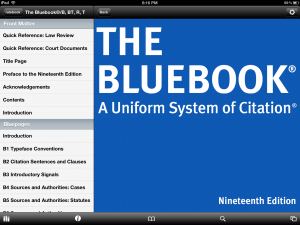Reading and Briefing Cases in Law School
 In my first semester of law school, a very smart friend came to visit me for a few days. I handed her a case from my legal writing problem set and asked her to read the case. She could barely make any of it out. I felt significantly better about myself, for I had been wondering if I had forgotten how to read.
In my first semester of law school, a very smart friend came to visit me for a few days. I handed her a case from my legal writing problem set and asked her to read the case. She could barely make any of it out. I felt significantly better about myself, for I had been wondering if I had forgotten how to read.
I think this feeling is common in the first few weeks or months of law school. Reading the law for the first time can be disorienting for several reasons, including the foreign terminology, the new structure of the cases, and the lack of context. Translating the written text into something that makes sense and then being able to communicate that material orally in class is a difficult skill to master for new law students.
If reading and briefing cases are skills that a student would like to strengthen, I recommend Ruth Ann McKinney’s book Reading Like a Lawyer: Time-Saving Strategies for Reading Law Like an Expert. The book starts with the premise that being an “expert reader” is a pre-requisite to excelling in law school and in the practice of law. The book goes on to tackle both reading and briefing cases with concrete strategies for both.


